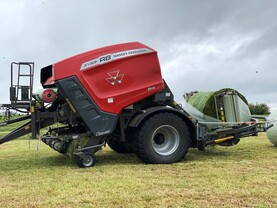Grass is motoring away on the farm at present and lambs seem to be thriving well due to the abundance of fresh grass and the sun on their backs. Grass is growing at 54kg dry matter per hectare (DM/ha) after surplus paddocks have been removed and there’s 14 days grazing ahead at the moment.
I have nearly all the fodder requirements for the coming winter saved at this point, but with a good number of paddocks closed after getting too strong for the sheep to graze, this shouldn’t be an issue to complete.
Maintaining quality
The problem from now on is maintaining grass quality while reducing fertiliser usage. I find that a certain amount of fertiliser is needed to keep grass from heading out from stress, but this also has the effect of growing more grass.
To this end, I will go out with light applications after grazing.
The heifers are also due to arrive on farm for the remainder of the grazing season, which will also help greatly with controlling the grass.
They will act as a flying mob, moving around the farm to where grass is in over-supply. I will also remove more paddocks as baled silage and sell it to some local farmers who require additional forage.
With the first reseeds due to come back into the grazing rotation shortly, I will also take the opportunity to reseed some more ground.
Additional dose
Most of the lambs have received an additional dose for nematodirus lately after a recent FEC test showed that it was present in all groups.
The oldest group didn’t receive a dose as they should have built up sufficient immunity against it to be able to cope with its presence.
I also applied Clik Extra to the lambs as they were in getting dosed to prevent against blowfly strike.
With any luck, I won’t have to treat lambs again during the summer.
Cobalt
All lambs also received cobalt when they were in the yard. This is something that I find is essential to give lambs on my farm, as without it they stop thriving, resulting in lambs hanging around the farm for longer.
At a recent meeting with the factory that I supply, it was interesting to hear that 55% of all spring lambs presented for slaughter so far this year were overweight.
This is a significant loss to the farmer supplying the lambs as they don’t get paid for the extra meat produced.
Market options
It also reduces the market options for the factories, as they have specifications they must also meet for their customers, who, in reality, are also farmers’ customers.
Without these customers, we would all be out of business, so not producing a product that appeals to the majority of customers reduces our stake in the market place.
This highlights the need to move stock for slaughter as soon as they become fit for market.
As lambs approach the desired weight, we need to monitor their weight gain closely so as to be ready to move them on.






 This is a subscriber-only article
This is a subscriber-only article









SHARING OPTIONS: